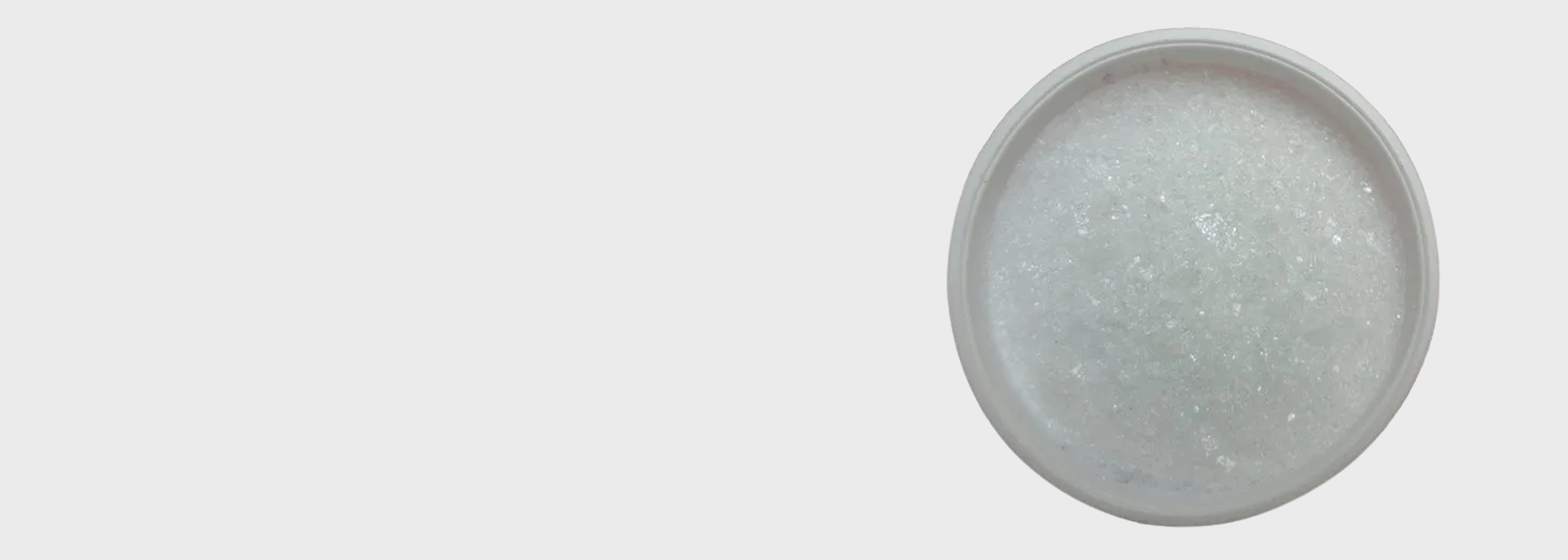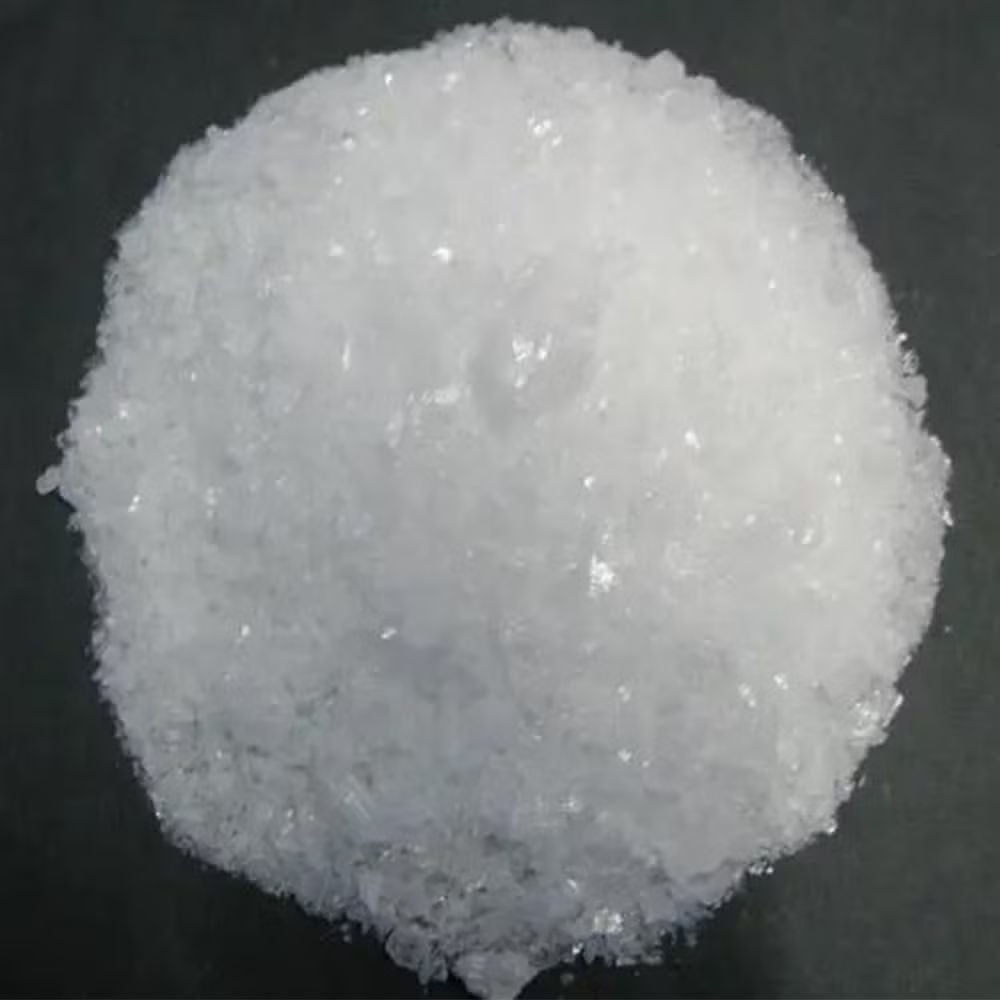
The Revolutionary Medical Applications of Silver Nitrate
From historical breakthroughs to modern medical practices
Introduction
Silver nitrate (AgNO₃) stands as one of the most versatile chemical compounds in medical history, with applications spanning across centuries. This inorganic compound—a salt formed by the reaction of silver with nitric acid—has revolutionized numerous aspects of healthcare from the 19th century to the present day. At Sulman Traders, we recognize the significant role silver nitrate continues to play in modern medicine despite the advent of antibiotics and other advanced treatments.
This article explores the fascinating journey of silver nitrate in medicine—from its historical significance to its current applications—highlighting why this compound remains indispensable in healthcare settings worldwide. We'll delve into both traditional and emerging applications, showcasing how this remarkable chemical continues to serve humanity's medical needs.
Historical Significance in Medicine
Silver has been used for its medicinal properties since ancient times. However, the structured medical application of silver nitrate began in the 19th century, marking a significant turning point in preventive healthcare. The most notable historical application came in 1880 when Dr. Carl Credé introduced what would later be known as "Credé's prophylaxis"—a procedure involving the instillation of 1-2% silver nitrate solution into the eyes of newborns to prevent ophthalmia neonatorum (neonatal conjunctivitis).
This simple yet effective procedure dramatically reduced blindness in newborns caused by gonococcal and other bacterial infections transmitted during birth. Before antibiotics, Credé's method reduced the incidence of ophthalmia neonatorum from approximately 10% to less than 0.5%, saving countless children from blindness. This represents one of the earliest successful preventive measures in modern medicine and highlights silver nitrate's powerful antimicrobial properties.

Silver nitrate has been used in medicine since the 19th century
Beyond ophthalmology, silver nitrate was also historically used to treat various conditions including:
- Wound disinfection during wartime medicine
- Treatment for venereal diseases
- Management of burns and skin ulcers
- Control of excessive granulation tissue ("proud flesh") in healing wounds
Modern Medical Applications
Despite the development of antibiotics and other modern medications, silver nitrate continues to maintain its place in contemporary medicine. Here are some of the most significant current applications:
1. Wound Care and Management
Silver nitrate remains a valuable tool in wound care, particularly for:
- Cauterization: Silver nitrate sticks (applicators with solid silver nitrate tips) are routinely used to cauterize small bleeding vessels, granulation tissue, and small skin lesions.
- Chemical burns treatment: Paradoxically, dilute silver nitrate solutions can help treat chemical burns by forming a protective layer of silver chloride when it contacts the chloride ions present in tissues.
- Burn wound care: Silver nitrate solutions (0.5%) are used as topical antimicrobial agents for burn patients, helping prevent infection in vulnerable burned tissue.
- Ulcer management: For chronic ulcers that aren't healing properly due to hypergranulation, silver nitrate can help reduce excessive granulation tissue and promote proper healing.
2. Dermatological Applications
In dermatology, silver nitrate continues to be used for various conditions:
- Wart treatment: Silver nitrate can be applied to warts as a caustic agent, destroying the infected tissue.
- Umbilical granulomas: These small tissue overgrowths at the base of the umbilicus in newborns are commonly treated with silver nitrate application.
- Aphthous ulcers: Silver nitrate can provide relief for painful mouth ulcers by cauterizing nerve endings and creating a protective barrier.
- Epistaxis (nosebleeds): Silver nitrate cautery is a standard treatment for anterior nosebleeds, particularly in children.

Silver nitrate is commonly used in dermatology for various conditions
3. Ophthalmological Uses
Though no longer routinely used for neonatal prophylaxis in many countries (replaced by antibiotics), silver nitrate still finds applications in ophthalmology:
- Treatment of symptomatic corneal bullae: In patients with bullous keratopathy, silver nitrate can provide symptomatic relief.
- Management of certain ocular infections: In regions where antibiotic-resistant strains are prevalent, silver nitrate solutions may be considered as alternative treatments.
- Punctal occlusion: Silver nitrate can be used to chemically close tear ducts (punctal occlusion) in cases of severe dry eye.
4. Specialized Treatment of Refractory Conditions
Recent research has highlighted silver nitrate's effectiveness in treating challenging medical conditions:
- Refractory Seroma: A recent case study published in the Journal of Surgical Case Reports demonstrates successful treatment of refractory seroma (fluid collection after surgery) using 20% silver nitrate solution after conventional treatments failed.
- Tracheocutaneous fistulas: Persistent connections between the trachea and skin following tracheostomy can be successfully treated with silver nitrate application.
- Perianal fistulas: Silver nitrate has shown promise in treating anal fistulas, offering an alternative to surgical intervention.
These specialized applications demonstrate silver nitrate's continuing relevance in treating conditions that may not respond well to first-line treatments.
Nanomedicine: The Emerging Frontier
Perhaps the most exciting development in silver nitrate's medical journey is its role in nanomedicine. Recent research has revealed that the effectiveness of Credé's method likely stemmed from the formation of silver oxide nanoparticles when silver nitrate interacts with biological fluids like tears:
- Nanoparticle formation: When silver nitrate comes into contact with tears, it forms silver oxide nanoparticles (20-70 nm) with enhanced antimicrobial properties.
- Superior antimicrobial action: These nanoparticles demonstrate strong antimicrobial action against ocular pathogens, potentially more effective than silver ions alone.
- Mechanism rediscovered: This understanding provides scientific validation for the historical success of Credé's method, showing that it was effectively an early application of nanomedicine.
This discovery opens new avenues for silver nitrate applications, particularly in combating antibiotic-resistant infections. As antimicrobial resistance continues to pose a global health challenge, silver nitrate-derived nanoparticles represent a promising alternative treatment approach with mechanisms distinct from conventional antibiotics.
Benefits and Limitations
Benefits
- Broad antimicrobial activity: Effective against bacteria, fungi, and certain viruses
- Low resistance potential: Multiple mechanisms of action make microbial resistance less likely
- Cost-effectiveness: Inexpensive compared to many newer antimicrobial agents
- Availability: Widely accessible, even in resource-limited settings
- Established safety profile: Long history of use with well-understood risks
Limitations
- Tissue staining: Can cause gray-black discoloration of treated tissues
- Pain on application: May cause burning or stinging sensation
- Potential toxicity: At high concentrations or with extensive use
- Limited depth of action: Primarily effective on surface tissues
- Requires proper handling: Can cause chemical burns if misused
Healthcare providers must weigh these benefits and limitations when considering silver nitrate as a treatment option. In many cases, the compound's long-established efficacy and safety profile make it an excellent choice, particularly for superficial conditions requiring antimicrobial or caustic action.
Current Research and Future Prospects
Research into silver nitrate's medical applications continues to evolve, with several exciting directions:
- Wound dressings: Advanced silver-based dressings incorporating controlled-release mechanisms are being developed for chronic wound management.
- Combination therapies: Silver nitrate in combination with other agents like antibiotics or growth factors is being studied for synergistic effects.
- Silver oxide nanoparticles: Targeted delivery systems using silver oxide nanoparticles derived from silver nitrate show promise for treating localized infections.
- Biofilm disruption: Silver nitrate's ability to disrupt biofilms (bacterial communities resistant to antibiotics) is being investigated for chronic infections.
- Environmental applications: Beyond medicine, silver nitrate's antimicrobial properties are being explored for water purification and surface disinfection.
These research directions suggest that silver nitrate, despite its ancient origins, will continue to play a role in cutting-edge medical technologies and treatments.
Industrial Production and Quality Considerations
As a leading chemical manufacturer in Pakistan, Sulman Traders understands the critical importance of quality in silver nitrate production for medical applications:
- Purity standards: Medical-grade silver nitrate typically requires 99.9% purity or higher, with strict limits on heavy metal contaminants.
- Production methods: Modern production involves the dissolution of silver in nitric acid, followed by crystallization, with careful control of reaction conditions to ensure purity.
- Quality control: Multiple testing stages, including atomic absorption spectroscopy and chromatography, ensure consistency and safety.
- Packaging considerations: As silver nitrate is light-sensitive, proper packaging in amber or opaque containers is essential to maintain stability.
- Regulatory compliance: Medical-grade silver nitrate must meet pharmacopeia standards and regulatory requirements specific to each market.
These rigorous quality standards ensure that silver nitrate used in medical settings is safe, effective, and consistent in its properties.
Conclusion
Silver nitrate's journey in medicine represents a remarkable example of an ancient remedy that has stood the test of time and continued to find new applications in the modern era. From preventing blindness in newborns to treating complex wounds and potentially addressing the challenge of antimicrobial resistance through nanomedicine, silver nitrate remains an invaluable tool in healthcare.
At Sulman Traders, we recognize the enduring value of this compound and are committed to producing high-quality silver nitrate that meets the stringent requirements of medical applications. As research continues to unveil new potential uses and mechanisms of action, we anticipate that silver nitrate will remain an important part of medical practice for generations to come.
The story of silver nitrate reminds us that sometimes the most effective solutions have deep historical roots—a testament to human ingenuity across centuries of medical advancement. While modern medicine continues to develop sophisticated treatments, there remains a place for well-established remedies that have proven their worth through decades of clinical experience.
Looking for reliable supply? Learn more about our high‑purity product on the Silver Nitrate (AgNO₃) product page.
Frequently Asked Questions
Is silver nitrate still used for newborn eye prophylaxis?
In many developed countries, silver nitrate has been largely replaced by antibiotic eye drops (such as erythromycin or tetracycline) for newborn eye prophylaxis due to less irritation and broader antimicrobial coverage. However, silver nitrate is still used in some regions, particularly where antibiotic resistance is a concern or where other options are not readily available. Recent research into silver nitrate's nanoparticle-forming properties in tears has sparked renewed interest in its mechanisms and potential applications.
What precautions should be taken when handling silver nitrate?
Silver nitrate requires careful handling due to its corrosive nature. Precautions include: wearing protective gloves and eye protection; avoiding contact with skin, eyes, and clothing; storing in a cool, dark place in closed containers; keeping away from combustible materials; and having access to eyewash stations and safety showers in handling areas. Medical professionals using silver nitrate sticks should be trained in proper application techniques to avoid damage to healthy tissue. All applications should be performed with precise control of the amount used and area exposed.
How does silver nitrate compare to other silver compounds used in medicine?
Silver nitrate differs from other medical silver compounds primarily in its solubility, reactivity, and applications. While silver nitrate is highly soluble in water and rapidly releases silver ions (making it suitable for cauterization and immediate antimicrobial action), compounds like silver sulfadiazine release silver ions more slowly, providing sustained antimicrobial effects for burn treatment. Colloidal silver contains suspended silver particles rather than ions and has less established medical efficacy. Nanocrystalline silver dressings provide controlled release of silver ions for wound care with reduced need for frequent dressing changes. Each silver compound has specific applications based on its chemical properties and release characteristics.
Can silver nitrate be used to treat infections resistant to antibiotics?
Silver nitrate shows promise against some antibiotic-resistant infections, particularly in topical applications. Its antimicrobial mechanism differs from antibiotics—it disrupts multiple bacterial cellular processes simultaneously by binding to bacterial cell membranes, enzymes, and DNA, making resistance less likely to develop. Research has shown effectiveness against certain multi-drug resistant organisms in wound care settings. However, its use is generally limited to surface infections due to toxicity concerns with systemic administration. As antimicrobial resistance continues to grow as a global health challenge, silver nitrate and other silver-based treatments may gain renewed importance as alternative or complementary approaches to conventional antibiotics.
What concentrations of silver nitrate are used for different medical applications?
Silver nitrate is used in various concentrations depending on the specific medical application. For ophthalmia neonatorum prophylaxis, a 1% solution was traditionally used (though now less common). Cauterization sticks for minor bleeding and warts typically contain 75-95% silver nitrate fused with potassium nitrate. For wound care and burns, much more dilute solutions of 0.5% are common to provide antimicrobial benefits without tissue damage. Treatment of hypergranulation tissue typically uses concentrations of 10-25%. For specialized applications like seroma treatment, concentrations around 20% have been reported in recent literature. The appropriate concentration must be carefully selected based on the intended use, with higher concentrations reserved for cauterization and lower concentrations for antimicrobial applications.
High-Quality Silver Nitrate for Medical Applications
At Sulman Traders, we produce pharmaceutical-grade silver nitrate that meets international standards for purity and safety. Whether you're in healthcare, research, or pharmaceutical manufacturing, we provide consistent, high-quality products to support your applications.
References
- Schneider JA, Cohen PR. Stevens-Johnson Syndrome and Toxic Epidermal Necrolysis: A Concise Review with a Comprehensive Summary of Therapeutic Interventions Emphasizing Supportive Measures. Adv Ther. 2017;34(6):1235-1244.
- Ho WT. Silver nitrate: a novel therapeutic approach for refractory Seroma following body malodor surgery. J Surg Case Rep. 2024;2024(2):rjae067.
- Martinez JD, et al. Role of Silver Nitrate Spray for Skin Wound Care in Patients with Toxic Epidermal Necrolysis: Our Experience in 4 Patients. Life (Basel). 2023;13(12):2341.
- Roy A, et al. Crede's method in eye water finds a nanomedicine base: a potential candidate to control ophthalmia neonatorum. Eur J Nanomed. 2016;8(4):233-237.
- Gao SS, Zhao IS, Duffin S, et al. Revitalising Silver Nitrate for Caries Management. Int J Environ Res Public Health. 2018;15(1):80.
